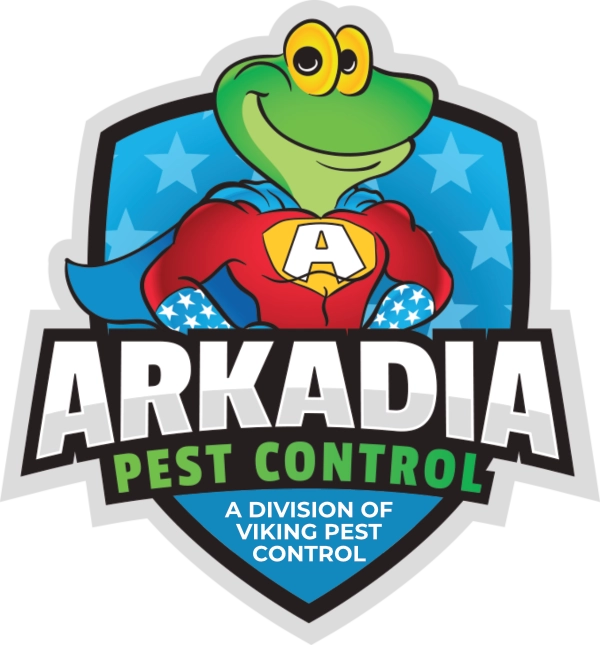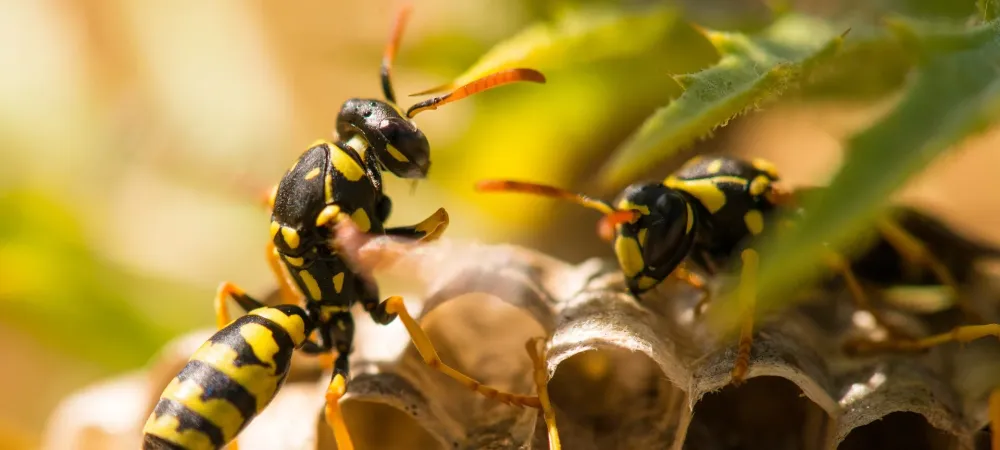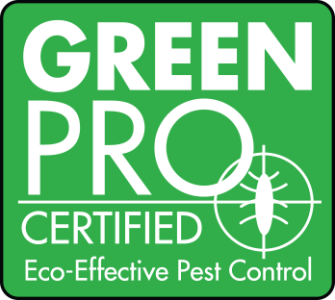Bees are excellent pollinators, and without them, our food supply would suffer, and we wouldn’t be able to enjoy the shade of a tree or beautiful landscaping. Although wasps are less effective at pollinating than bees, they play an important role in keeping destructive insects, like aphids and caterpillars, away.
As helpful as bees and wasps are, their stings can be life-threatening for people who are allergic. When bees and wasps build nests in and around New Jersey homes, it can be frustrating, inconvenient, and even dangerous for many residents.
The natural response for many is to remove the nests, but many DIY removal methods are ineffective and dangerous. The safest option for removal is always a trained professional.
Know Your Bees and Wasps
Before you panic at the first sight of a bee or wasp, it’s a good idea to familiarize yourself with the different types of bees and wasps that are native to New Jersey. Here are some of the most common bees and wasps that you are likely to encounter.
Bumblebees
Bumblebees are hairy with black and yellow markings and are slightly larger than honeybees. They typically make nests in the ground but will make a nest in a structure if one is available. Bumblebees will sting, especially if the nest is in a space with a lot of foot traffic such as a front door or another area of a home or business.
Carpenter Bees
Carpenter bees are black and yellow with shiny abdomens. Unlike other bees, carpenter bees do not live in nests but rather bore into wood. They cause extensive structural damage if left untreated. Carpenter bees do not sting but can be difficult to get rid of without professional methods.
Red Paper Wasps
Red paper wasp nests look like paper, hence the name. Red paper wasps have brown bodies with red and yellow markings. They typically only sting when they feel like the nest is in danger and if you have a paper wasp nest in a high-traffic area, the likelihood of a sting is high.
Eastern Cicada Killer Wasp
Eastern Cicada Killer wasps have black and yellow stripes with brown wings. The females rarely sting, but the ground-burrowing wasp is often destructive around sidewalks and other landscaping areas.
Issues with DIY Removal Methods
Many homeowners assume that they can easily remove a bee or wasp nest without any issues. While there are plenty of DIY removal methods and tips available online, removing wasps or bees on your own can result in stings, destroying a valuable part of our ecosystem, or not effectively removing the nest.
In short, DIY removal methods are often ineffective and do more harm than good. Removing bees and wasps may save you some money, but it’s often more time-consuming and dangerous. Even if you are successful in carefully removing the nest, bees and wasps are likely to return to the same place and rebuild a nest.
Remember, if you or anyone in your family is allergic to stings attempting to live near or remove a nest can have fatal results.
Let Arkadia Handle Your Bee and Wasp Removal
Not only is it safer to let a professional take care of bee and wasp removal outside of your business or home, but the knowledgeable and trained staff at Arkadia knows how to effectively remove your bees and wasps to prevent nests from returning.
At Arkadia, we know which types of wasps and bees cause the most damage and can properly identify the species before we provide a solution. We understand the importance of saving the pollinator population, so whether you have a carpenter bee infestation or a wasp problem, we make sure that our eco-friendly treatment is safe for the pollinators.







